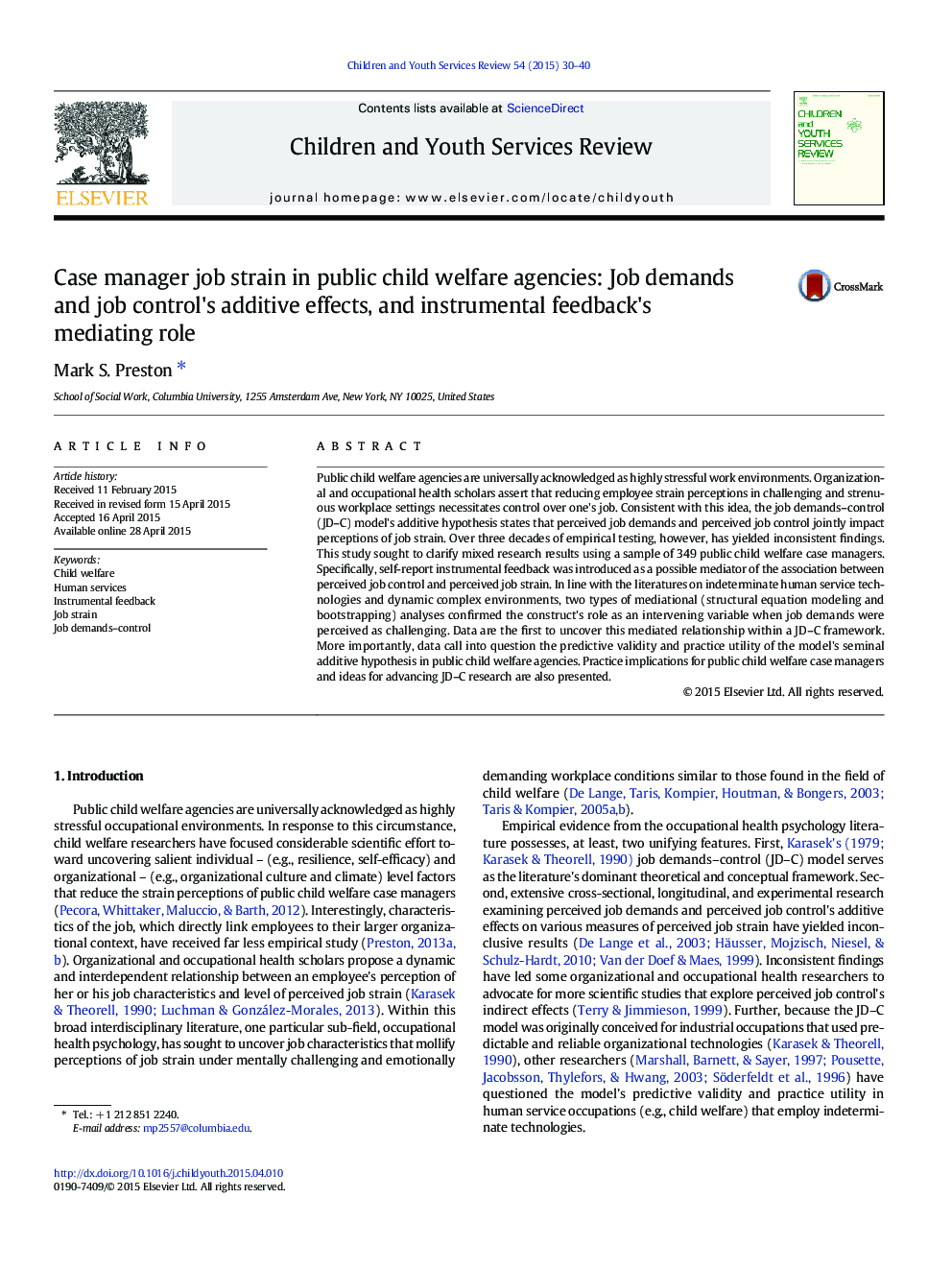| Article ID | Journal | Published Year | Pages | File Type |
|---|---|---|---|---|
| 345948 | Children and Youth Services Review | 2015 | 11 Pages |
•Inconsistent empirical support for JD-C model’s additive hypothesis•419 New York State child welfare case managers were surveyed•A significant positive main effect for job demands on job strain•A significant negative main effect for job control on job strain•Self-report instrument feedback fully mediated the control-strain relationship
Public child welfare agencies are universally acknowledged as highly stressful work environments. Organizational and occupational health scholars assert that reducing employee strain perceptions in challenging and strenuous workplace settings necessitates control over one's job. Consistent with this idea, the job demands–control (JD–C) model's additive hypothesis states that perceived job demands and perceived job control jointly impact perceptions of job strain. Over three decades of empirical testing, however, has yielded inconsistent findings. This study sought to clarify mixed research results using a sample of 349 public child welfare case managers. Specifically, self-report instrumental feedback was introduced as a possible mediator of the association between perceived job control and perceived job strain. In line with the literatures on indeterminate human service technologies and dynamic complex environments, two types of mediational (structural equation modeling and bootstrapping) analyses confirmed the construct's role as an intervening variable when job demands were perceived as challenging. Data are the first to uncover this mediated relationship within a JD–C framework. More importantly, data call into question the predictive validity and practice utility of the model's seminal additive hypothesis in public child welfare agencies. Practice implications for public child welfare case managers and ideas for advancing JD–C research are also presented.
